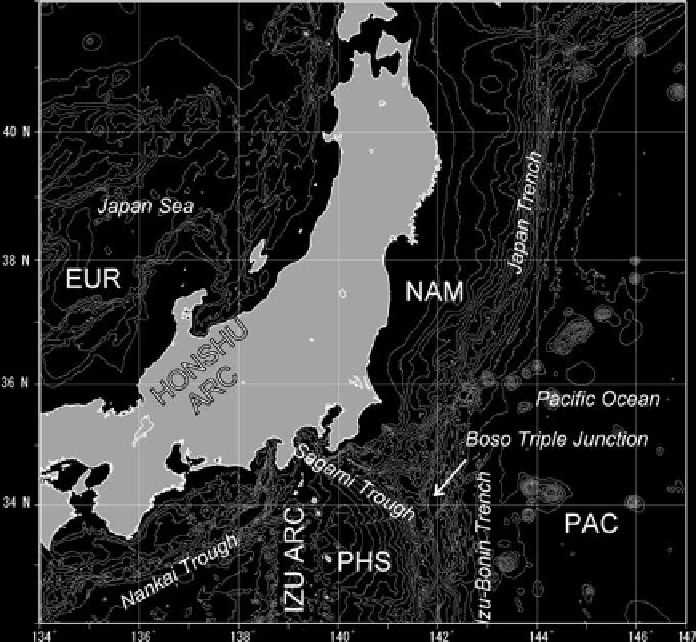Geoscience Reference
In-Depth Information
1
Introduction
The Boso triple junction is the only known example of a trench-trench-trench type
triple junction (Seno et al.
1989
; Ogawa et al.
1989
) (Fig.
1
). At present, three litho-
spheric plates converge at this junction in a stacked array of subduction systems. The
Philippine Sea plate (PHS) forms the southwestern margin of the triple junction
system, and is subducting beneath the North America plate (NAM). The motion of
the PHS relative to the NAM is thought to be up to 2.7 cm/year toward the northwest,
subparallel to the northwest-trending Sagami trough (Seno et al.
1989
) (Fig.
1
). The
Pacific plate (PAC) lies to the east of the triple junction and is subducting westward
beneath both the PHS and NAM along the Izu-Bonin (Ogasawara) trench (Fig.
1
).
At present, the PHS is not moving parallel to the Izu-Bonin trench, which
suggests that the Boso triple junction may be unstable. Indeed, the Boso triple
junction may be in transition from a trench-trench-trench junction to a trench-
trench-transform junction (Ogawa et al.
1989, 2008
; Niitsuma
1996
).
Fig. 1
Map showing the relationships of the Eurasia (
EUR
), North America (
NAM
), Philippine
Sea (
PHS
), and Pacific (
PAC
) plates and the associated trenches

Search WWH ::

Custom Search